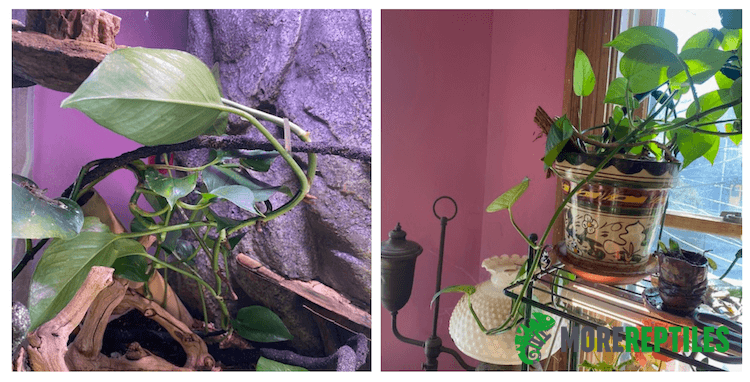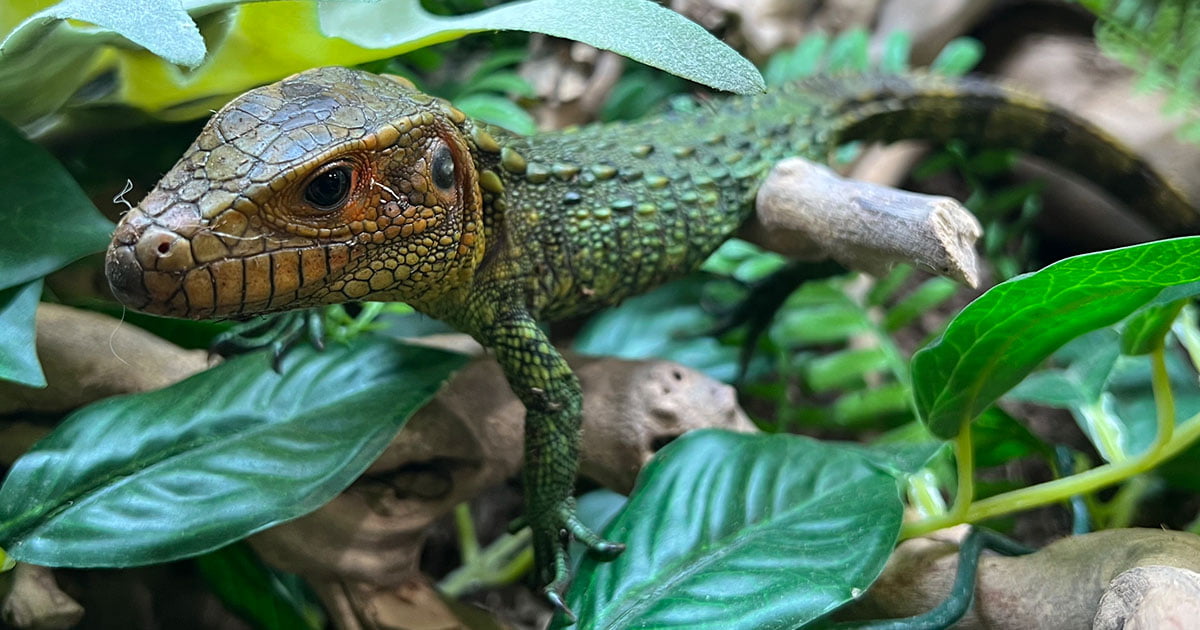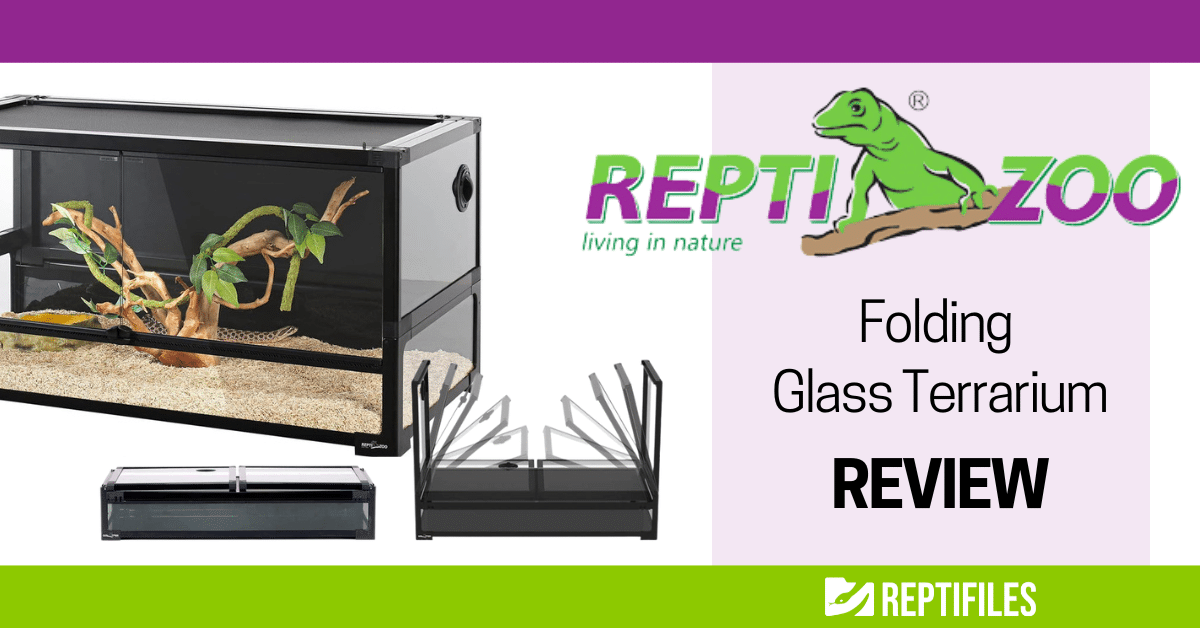Many Crested Gecko keepers are excited by the idea of adding plants into their gecko’s enclosure. This often comes from a desire to provide a more natural or bioactive environment.
I experienced lots of excitement when I set up my first Crested Gecko enclosure 16 years ago.
Though I had some unanticipated difficulties, I have generally been successful with planted enclosures. Some things I quickly found out were active geckos are hard on some of the more fragile plants. Also, some Crested Gecko plants are harder to grow, especially with the wrong lights!
Keep reading to find out about seven of the best plants to add to your enclosure. I also share my tips for how to grow them and maintain them successfully.
What to Know
- Crested Geckos benefit hugely from having plants in their enclosure. Plants improve the retention of humidity, offer safe hiding places, and provide a more natural environment.
- Some Cresties enjoy sitting on sturdy plants, or wrapping themselves in the leaves when sleeping.
- In my experience, one of the best plants safe for Crested Geckos is pothos (Epipremnum pinnatum). This species is hardy, easy to grow and can fill an open space.
- There are many plants which are listed as “dangerous” or “poisonous”. However, for most of these plants the poisoning occurs when the plants are eaten.
- Truly dangerous plants are those that are spiky, or those that ooze a substance that can irritate on contact, such as primrose or oleander.
Best Plants For Crested Geckos
1. Pothos (Epipremnum pinnatum)
This is my favorite plant for Crested Geckos and for all other planted environments.
Pothos grows like a vine. It is a very forgiving plant that is flexible about how much light and how much water it needs. When properly supported, it can also easily take a Crested Gecko’s weight.
The pothos leaves are usually green, but can also be variegated in color with patches of yellow or white. The leaves provide good cover for geckos of all sizes.
I installed a fake, bendable “jungle vine” in my enclosures that the pothos can be twined around to help it cover the height of the enclosure better. A fake vine can be used to “train” a real vining plant to climb up the enclosure.
Plants can be rooted directly into the substrate of the enclosure. Another method is to put the plants into pots and place the pots in the enclosure.
I have come to prefer pots since it allows plants to have a deeper rooting system (most enclosure substrates are only a few inches deep) and the plants can be moved around easily.
It is also easy to propagate by cutting off part of the plant, placing it in water until roots are visible and then planting it. I took a pothos plant from my mother’s house 20 years ago and, after making cuttings, it is now in six planted cages!
The pothos in my gecko cages have taken off! They fill the space well by putting out leaves that extend the plant.
Pothos grows best with a good plant light, but will still grow even if the light is not ideal. It does well with daily misting and has no problem if I’m away for a weekend and can’t mist for a few days.
2. Snake Plant (Sansevieria parva)

Sansevieria plants have many common names including “snake plant” or “mother in law tongue”. There are many different types of sansevieria, some of which can grow to be more than 12” tall.
This plant is often recommended because it easily tolerates being climbed on and most varieties also do well in low to moderate light.
The classic sansevieria plant seen in many homes is probably Sansevieria trifasciata laurentii. Its appearance is that of a number of sword-shaped leaves growing together in a rosette pattern.
The one I use for Crested Geckos is a Compact Sansevieria (pictured above).
One of the only disadvantages of using sansevieria is that this plant is really a succulent and does best when allowed to dry out before being watered again. Not knowing this originally, I kept a sansevieria in a red eyed tree frog enclosure and it eventually rotted.
For best results, plant your sansevieria in a pot, since the substrate will be misted frequently. When misting, avoid spraying directly onto the plant if the soil is already wet (you can put your finger into the soil to check).
You should also place your sansevieria at the side of the enclosure, rather than in the middle where it will be misted frequently and will be directly under the lighting.
I have one potted sansevieria in the back of my enclosure.
I’m currently spraying water directly onto the soil every evening, since the actual amount of water it gets isn’t that much compared to how much it would get if I were using a watering can. The plant is doing very well and looks great in the enclosure.
3. Lucky Bamboo (Dracaena sanderiana)

Lucky Bamboo plants are often sold in flower stores in fancy small pots and in decorative configurations. They look like bamboo (though they are not related) because they have a straight, thin “trunk” with sword shaped leaves at the end.
The stem of this plant can be trained to grow in different directions and the plant is often sold with the stems braided together.
I prefer to let my lucky bamboo “run wild” (see picture above).
Lucky Bamboo does well with a lot of water and grows best when set in a bud vase with water and some small pebbles to hold it up. If the pot is set into the enclosure in a stable manner, it will easily tolerate a Crested Gecko sitting on it.
I place a single piece of lucky bamboo in a Crested Gecko with a narrow vase with water. I fill it to the brim every evening when I mist the cage and let it take off.
Although extremely bright light may cause the leaves to turn yellow, the moderate level of lighting in most setups works very well for this plant.
4. Anthurium (Anthurium andraeanum)
Anthurium a striking plant that’s worth a try.
This plant has large dark green heart-shaped leaves, each at the end of a stem growing up from the bottom of the plant. The flowers, which can be white, red or hot pink, also grow from their own stems and are shaped very much like the leaves.
Anthurium can be planted directly into the substrate or placed in a pot and will tolerate misting with no problem.
These plants do well in a moderately lit, moist environment.
I successfully kept an anthurium plant in a day gecko cage for many years. It thrived for a very long time.
5. Bromeliads
Bromeliads are related to the pineapple family. The share the same spiky leaves at the top of the pineapple, with a brightly colored flower at the top. These leaves serve as good decor, especially for lower plant coverage. They also grow in clusters are designed to trap water so are a good drinking source.
6. Ficus (Ficus benghalensis)
Ficus plants are related to fig, rubber and banyan trees. In their native environment they are huge and can reach 100 feet, however, they are also sold as potted plants. In a gecko setup they will stay small.
The most common ficus plants include:
- Ficus benjamini
- Ficus benghalensis
- Ficus elastica
Ficus plants look like trees with a small trunk and leafed branches.
Some varieties have mildly poisonous substances in the sap, but this is not an issue for Crested Geckos, since they will not be gnawing on the trunk and eating the sap.
For most poisonous plants, the poisoning occurs when the plants are eaten. Your Crested Gecko is not going to be eating plants, since they are not plant eaters.
If the substrate of the enclosure is on the deep side (4” or more) ficus could be rooted directly into the substrate. Otherwise it will do well in a pot with well drained soil.
Ficus will tolerate watering, but should not be drenched or left in standing water.
7. House Plants

House plants can add variety and interest to any enclosure! However, admittedly, it is a very general category with many types of plants.
I have found that some plants that I keep outside in the summer can be offered winter accommodation in a gecko enclosure. I live in the US (in New England), so plants that tolerate the sometimes hot, sometimes wet summers, are good candidates.
Currently I am growing a columbine plant in my Crested Gecko cage and several coleus plants too.
My Crested Gecko regularly steps on the columbine plant and bends the stems. I don’t expect it to flower, but it has been in the enclosure for the last six months and continues to send up leafy shoots.
Dangerous Plants
Reptiles Magazine includes a list of plants that can be toxic to reptiles. A careful reading of the ways in which “poisonous” plants are unsafe shows that the vast majority of them release their poison when they are eaten.
Crested Geckos, although they do eat plant nectar, do not eat leaves or stems of plants. They will not gnaw on plants and will not scratch into a plant trunk to release its sap.
Consequently, most of these plants do no harm in their enclosure.
The only types of plants that should be avoided include:
- Plants that contain thorns or spikes, such as miniature rose bushes or some cacti.
- Plants that emit an irritating substance on the leaves or stems such as the stinging nettle or poinsettia.
Some keepers may choose to avoid any plant that has a “poisonous” label.
If you have concerns about if a plant is safe, pick another species!
In my experience there are many safe and attractive alternatives to choose from besides those described above. Experimentation with different plants and combinations is encouraged.
Adding plants into an enclosure is interesting, rewarding and beneficial.
Do Crested Geckos Need Plants?

Crested Geckos in the wild live in heavily planted rainforests of New Caledonia.
Although not everyone would agree, I feel that this species benefits hugely from plants in their enclosures.
Pet lizards should, whenever possible, be kept in environments that are similar to how they live in the wild. For Crested Geckos, this includes plants.
From my experience, a heavily planted enclosure gives more surface area to explore and also provides a greater variety of spaces for hiding and sleeping. I have found my 16 year old, Spencer, asleep during the day after wrapping himself up in pothos leaves (see picture above)!
Another benefit is when the enclosure is misted, water droplets stay on the plant leaves for quite awhile. This means they are a great source of hydration.
What Makes a Good One
The best plants for a Crested Gecko need to be hardy, safe, sturdy and able to withstand high humidity. Since the enclosure will be misted at least once a day, plants that need a dry environment, such as cacti, will not thrive.
Avoid plants that have thorns or spikes since this could easily damage their skin.
The type of lighting should also be compatible with the needs of the plant and the gecko.
A Word About Lighting

Crested Geckos are nocturnal so light is only important to them for day/night cycles.
Light is much more important to plants!
Choosing the proper lighting would be a whole other article, in-fact we have one covering Crested Gecko lighting in detail.
In short, some plants require lighting that approximates “full sun”, while others require less bright light.
For many years I used fluorescent lights and fixtures purchased in reptile stores and didn’t understand why my plants weren’t flourishing. I then switched to LED ‘grow lights’ and have never looked back! These light fixtures are long and narrow like a florescent light, but contain a series of small LED bulbs.
LED lights are bright enough to encourage plant growth, but not so bright as to harm the Crested Gecko.
They have improved the plant growing situation in all my gecko enclosure significantly!
Too much light is not usually a problem since there is no need to provide a basking area or other bright light area.
If a plant is overexposed to light, the leaves, especially those near the light source, will become yellow or will show scorch or burn marks. These plants need to be moved away from the light source or removed from the enclosure.
Too little light is more of an issue.
I had a piece of lucky bamboo in a gecko cage for over a year and it didn’t produce a single leaf. When I upgraded to a better light, it had its first leaf within two weeks.



